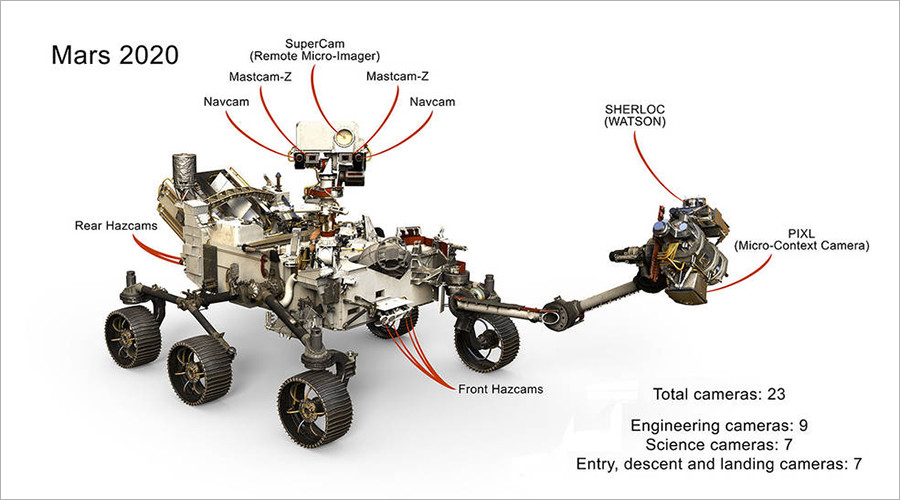
According to NASA, the agency’s next Mars rover will have more cameras than any rover before it: a grand total of 23, to create sweeping panoramas, reveal obstacles, study the atmosphere, and assist science instruments.
The camera-laden rover will be able to better show obstacles, capture panoramas and study the atmosphere on its Mars mission. “Camera technology keeps improving,” Justin Maki, Mars 2020’s imaging scientist said. “Each successive mission is able to utilize these improvements, with better performance and lower cost.”
The Mars 2020 rover is being built at NASA’s Jet Propulsion Lab (JPL) in Pasadena, California, and is light years ahead of the first Mars Pathfinder in 1997, which was fitted with five cameras.
2020’s Mastcam-Z’s stereoscopic cameras can support more 3D images and can better capture erosion and the texture of soil from a greater distance.
Previous rovers were built with 1 megapixel engineering cameras, used for planning drives and to avoid hazards, that took monochrome images.
Now, the new rover’s nine engineering cameras will capture 20 megapixel color images, with a wider frame. This will save time on missions, as less images will need to be taken.
“Our previous Navcams would snap multiple pictures and stitch them together,” JPL’s Colin McKinney said. “With the wider field of view, we get the same perspective in one shot.”
The Mars 2020 will have seven science cameras and seven entry, descent and landing cameras, NASA said. The cameras will allow the space agency to capture the rover’s parachute opening on Mars. There will also be a camera inside the rover where samples will be stored.
One downside to the cameras’ ability to capture better quality images is that they’ll produce a greater volume of data that will need to be sent back to Earth. The new cameras have the ability to compress images to make them easier to send back.
NASA’s current Mars rover, Curiosity, has been exploring Mars for five years, even though it was originally scheduled to last two years.
Mars 2020 is timed to launch in July or August 2020, when Earth and Mars are in an optimum position for the landing. It aims to further the ongoing Mars research, and will focus on whether there’s life on Mars, collecting more samples and testing oxygen production and the Martian atmosphere.













